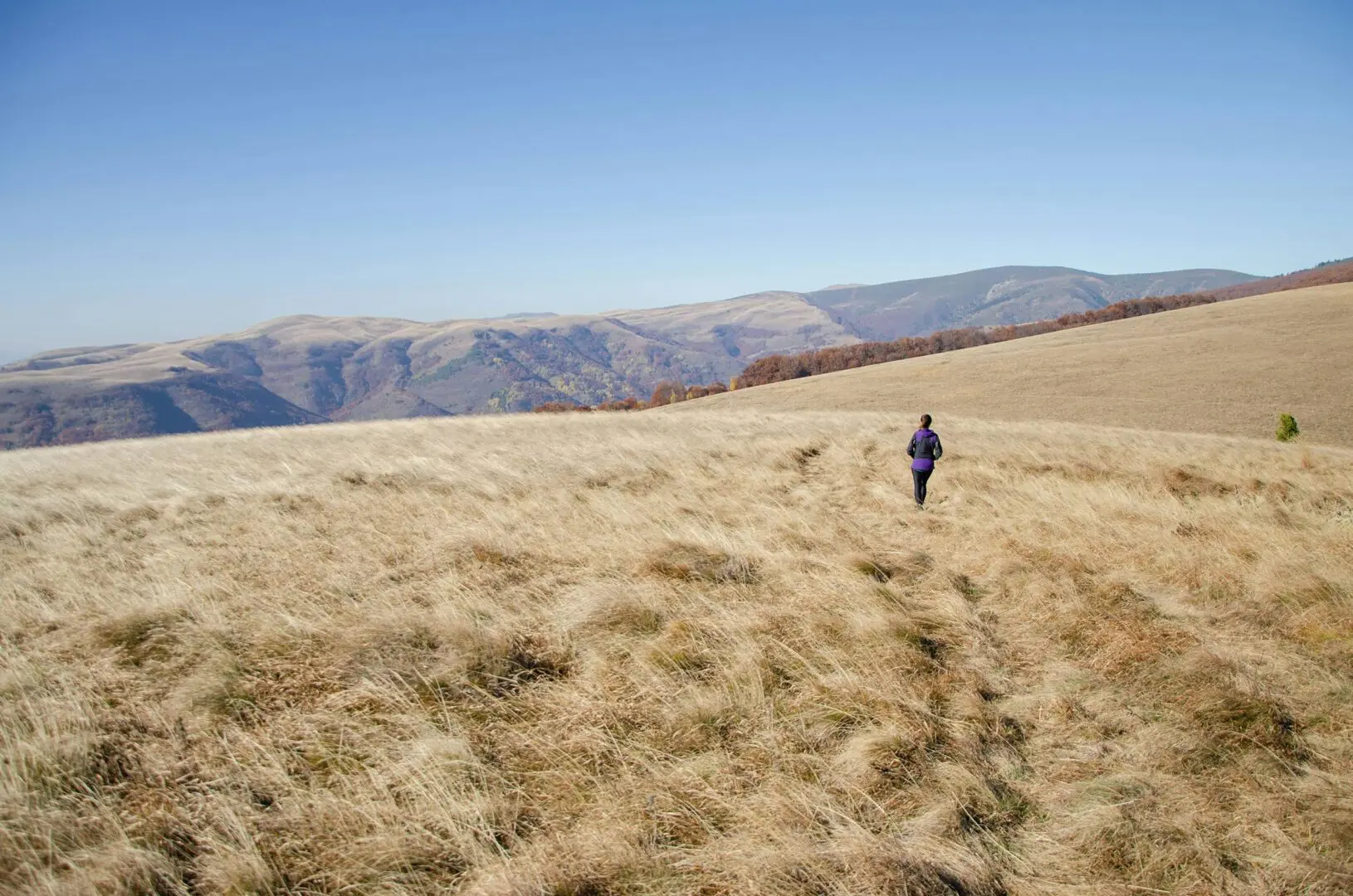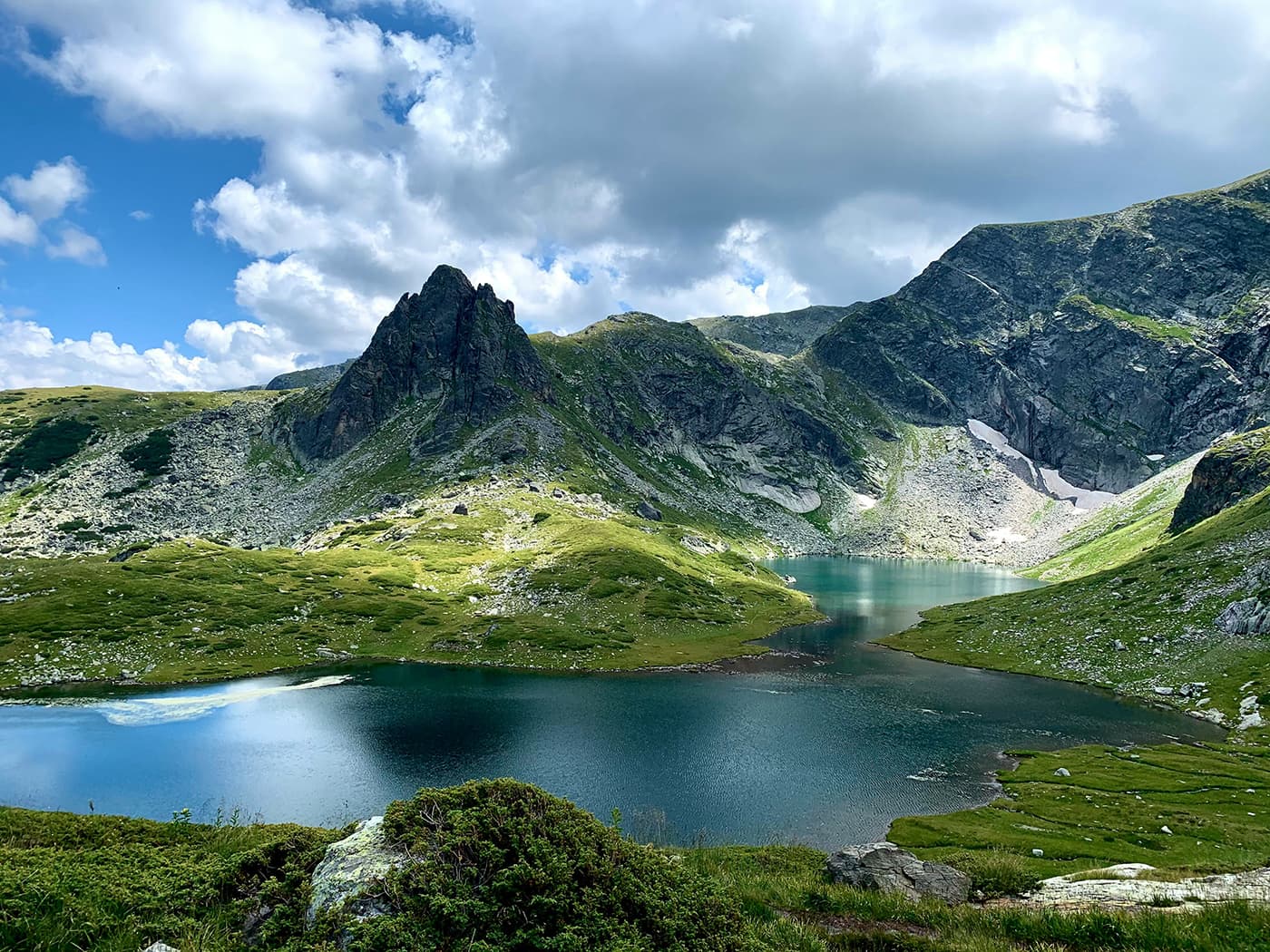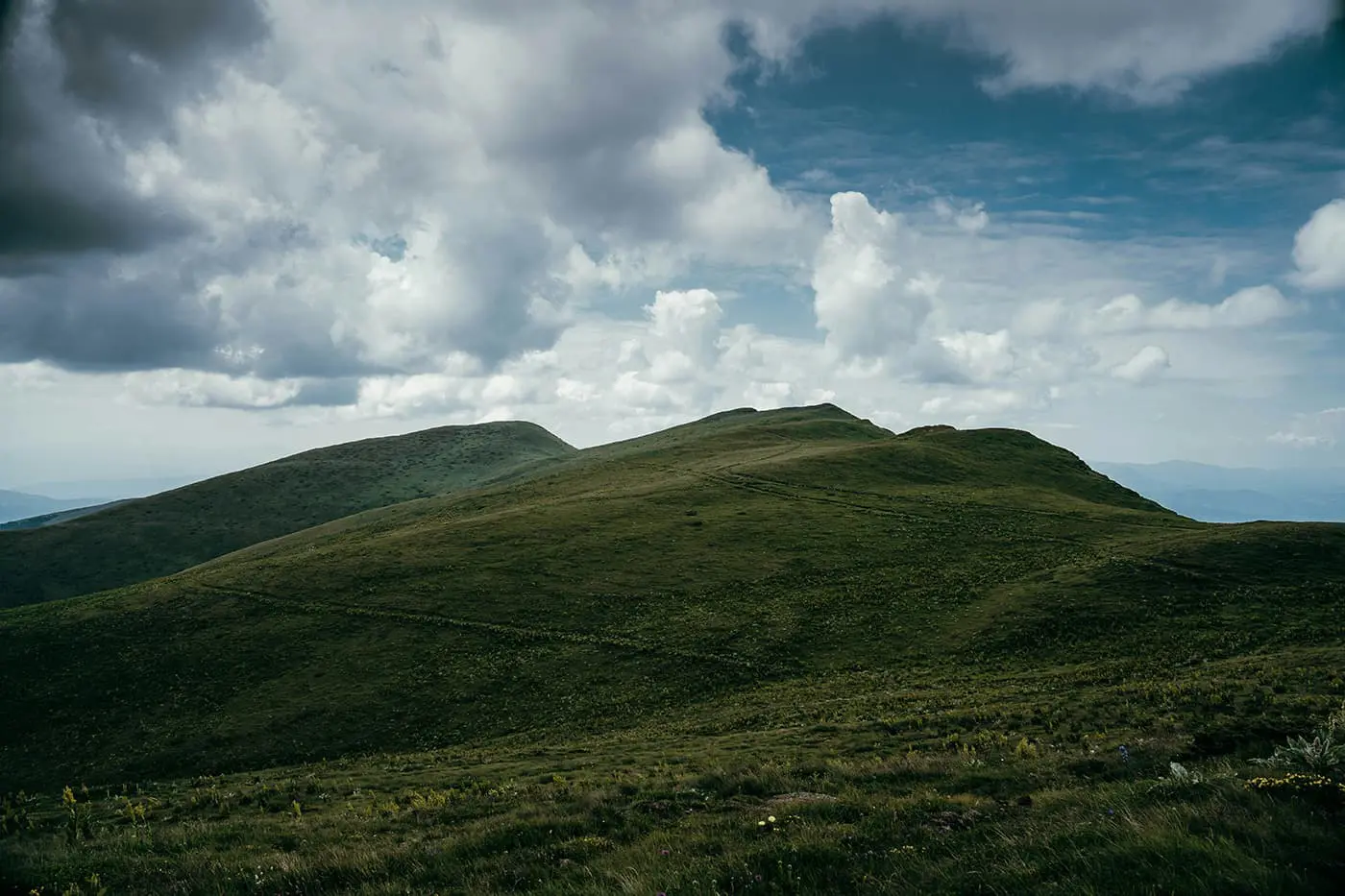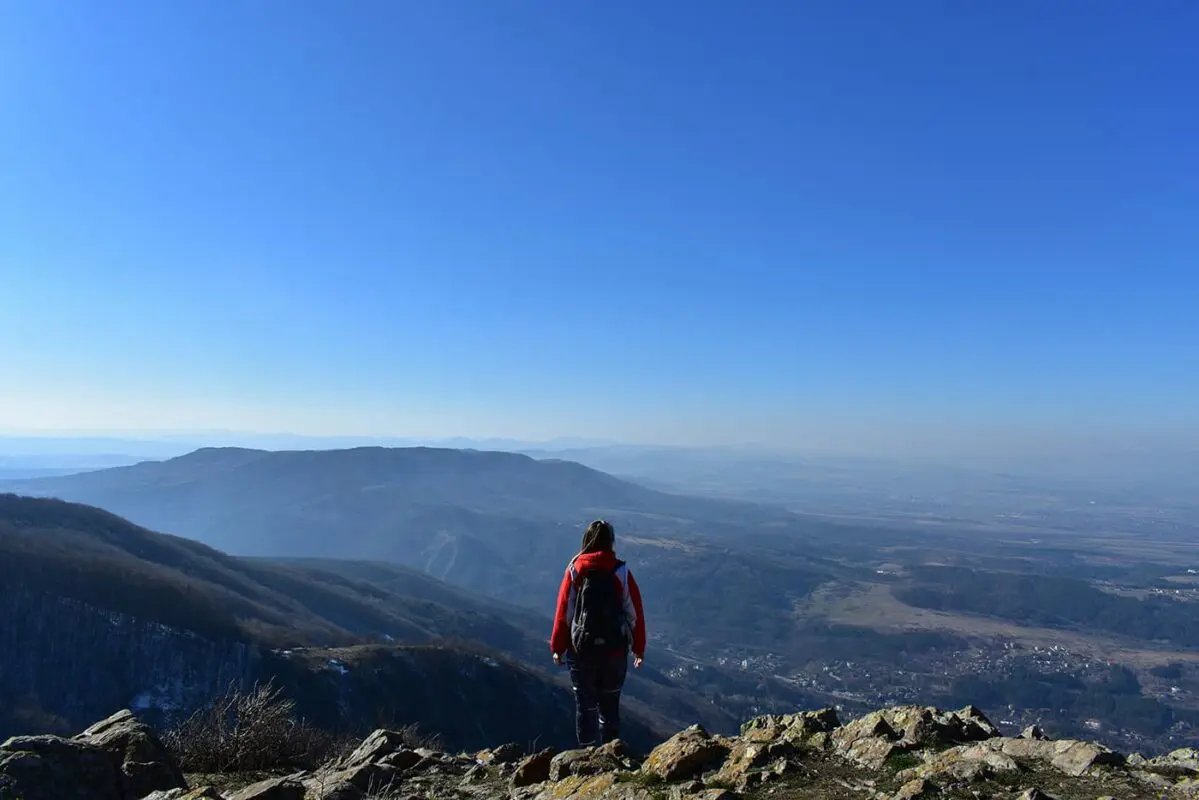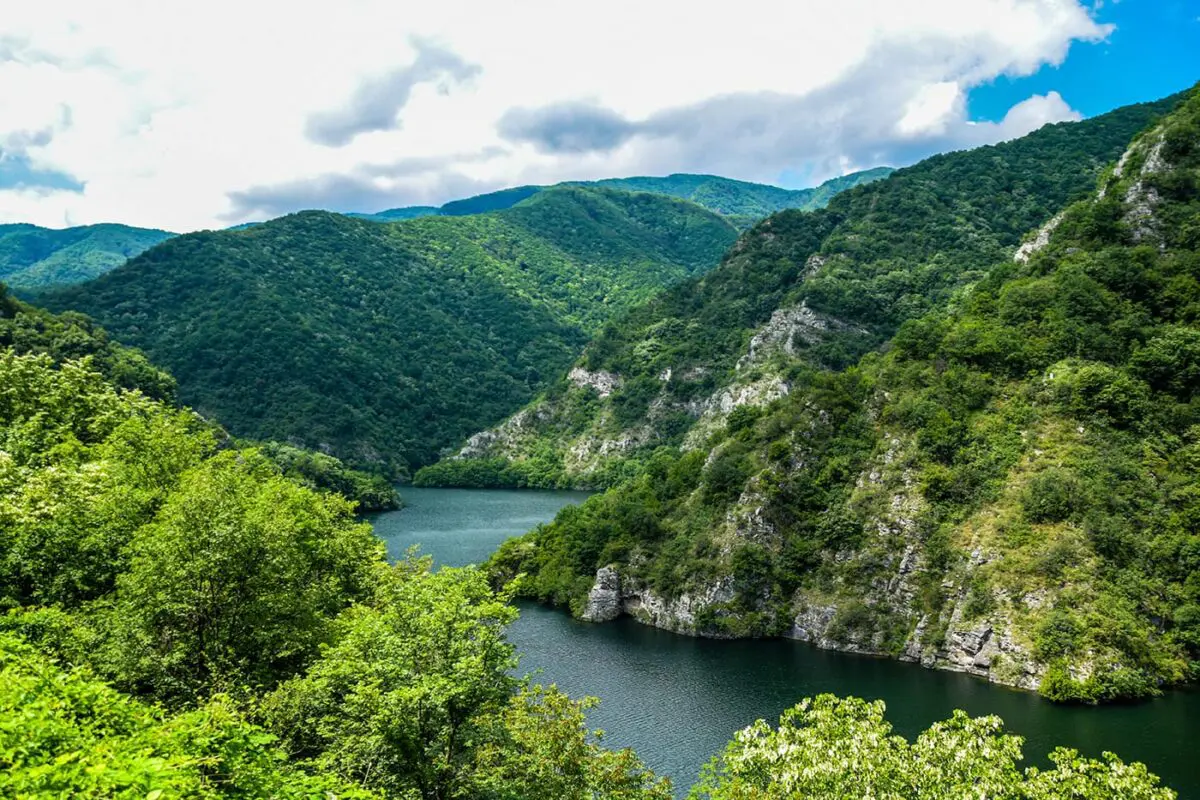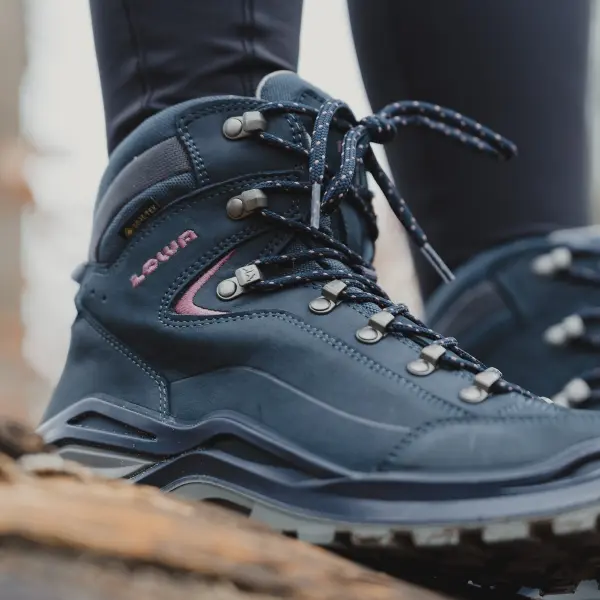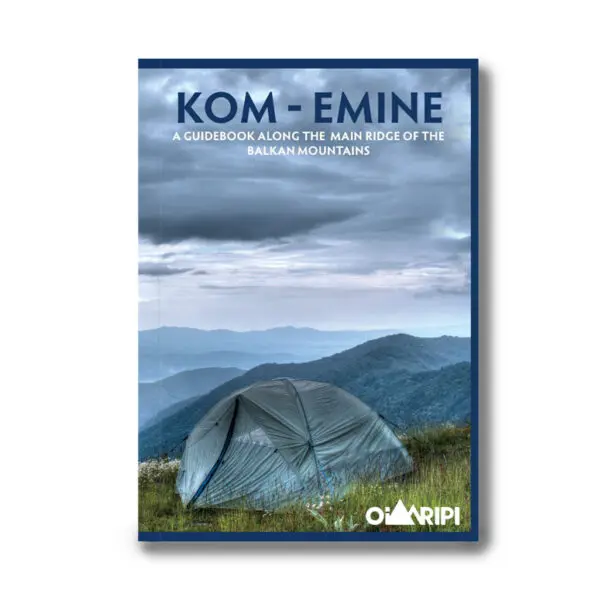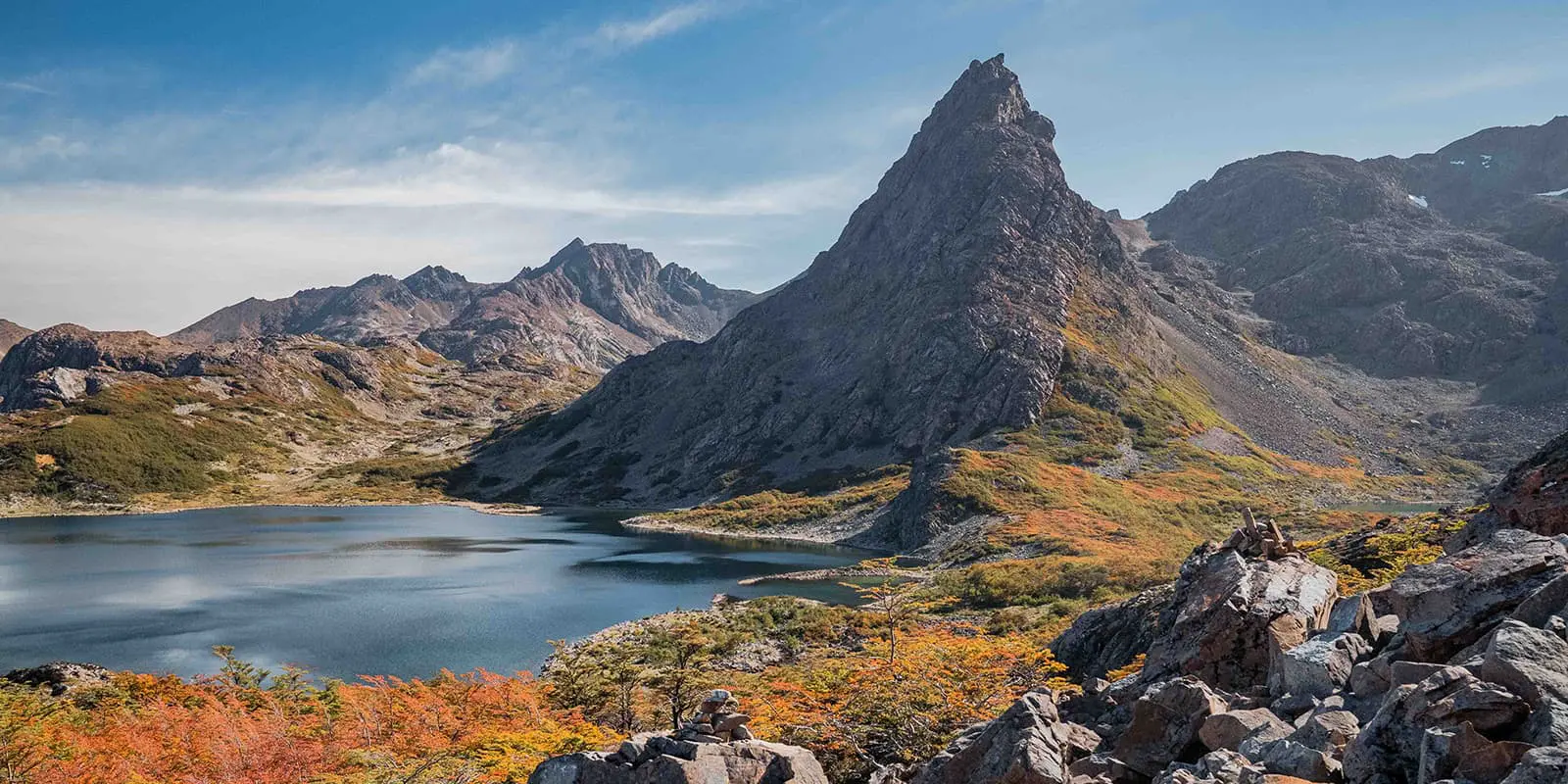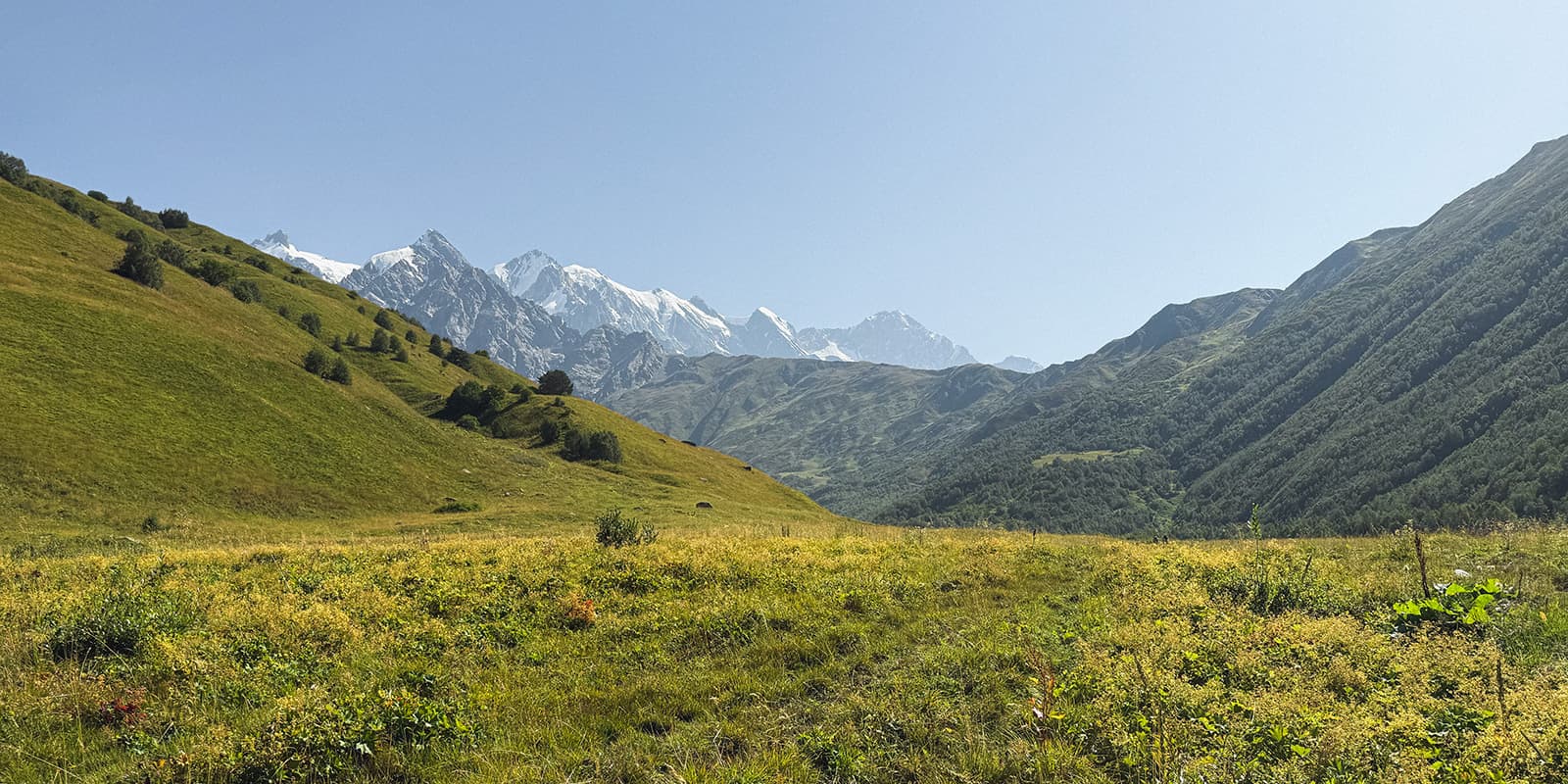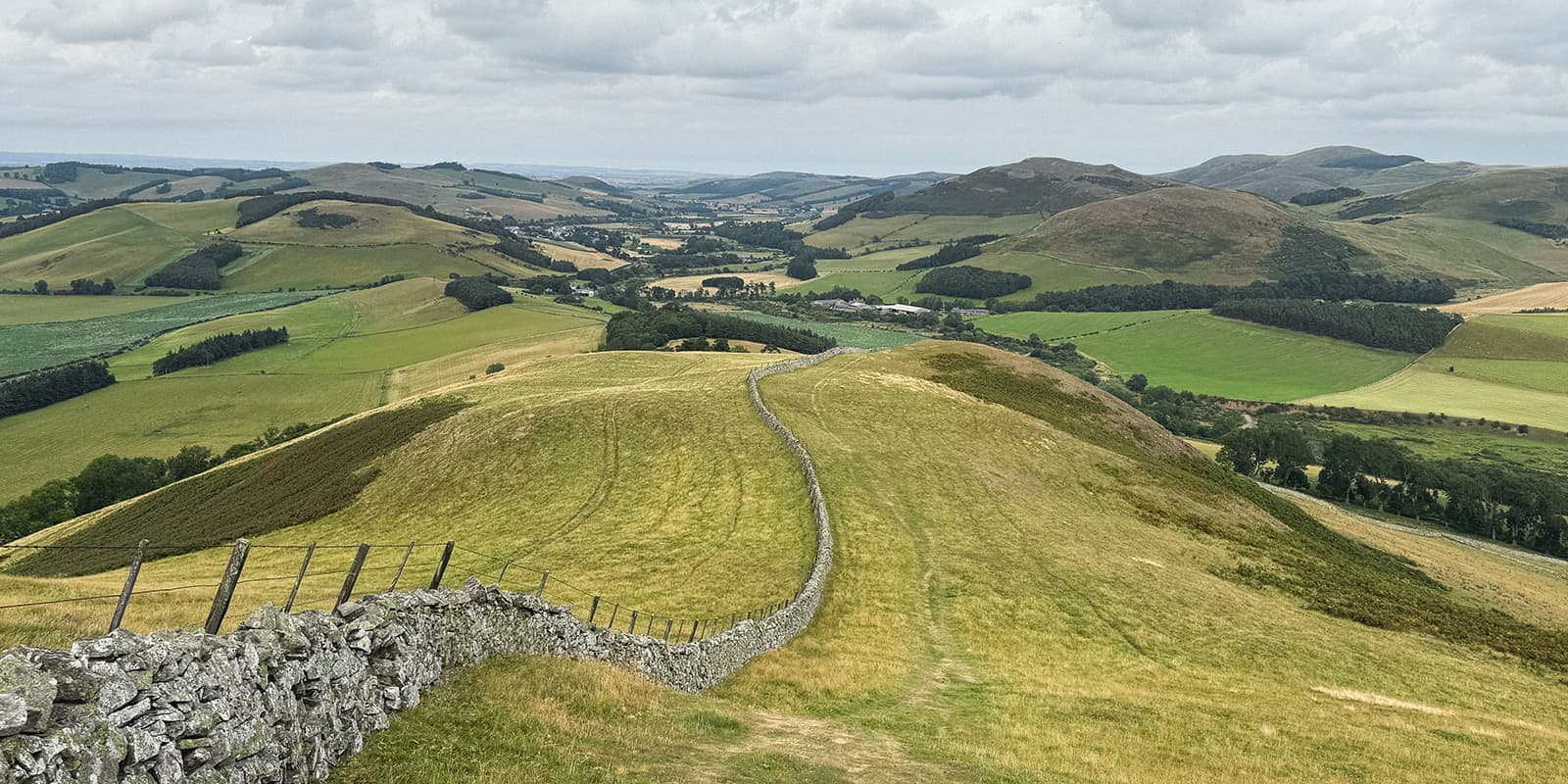The trail climbs most major peaks in Bulgaria’s Balkan Mountains, including more than 20 peaks over 2000m, featuring some with alpine relief. The path ends at the Cape Emine lighthouse, the easternmost point of the Balkan Mountains, with Irakli Beach just a short hike away for a refreshing end of your thru-hike.
The Bulgarian section of the E3 route is marked with red markings and signposts. Exposed areas have winter markings with metal poles and azimuth plates. It crosses the town of Kotel and several villages like Lakatnik, Planinitsa, Daskotna, Dobra Polyana, Kozichino and Emona.
The Kom Emine typically takes 21 days for moderately trained hikers, with daily hikes lasting 8 to 15 hours, ending at huts or shelters. Some stages can be shortened for a less strenuous hike. Most of the route does not require special technical skills, but certain sections in the Central Balkan National Park are more challenging and suited for experienced hikers.
In summer, It’s totally OK for a first long-distance hike. The only somewhat technical section is equipped with cables and can also be avoided through an alternate route. The rest is mostly paths and dirt roads that do not require any previous experience. However, in winter, it is absolutely necessary to bring crampons, ice picks, ropes, and avalanche safety gear. Only attempt this if you have vast winter alpinism experience.
The trail passes through limited towns and villages, making grocery options scarce. Mountain huts and shelters offer some meals, and some even offer a wide variety. Some sections lack drinkable water sources, so it’s crucial to carry enough for the day.



